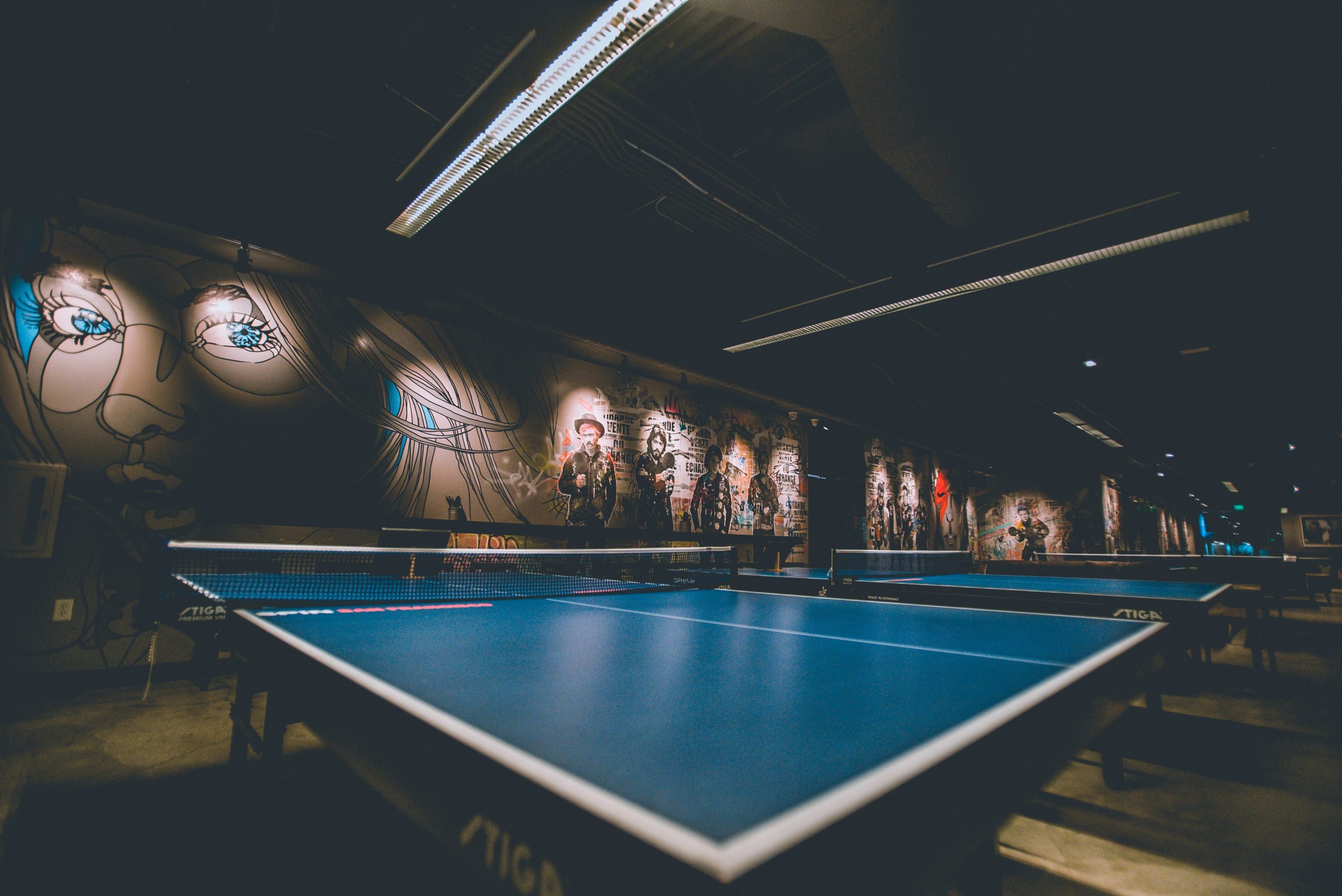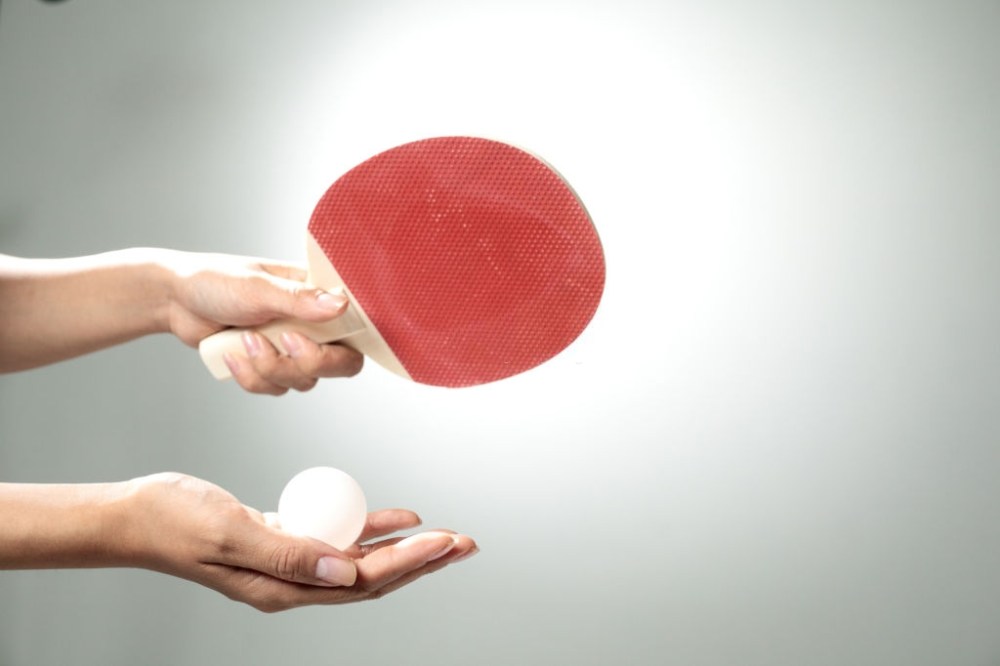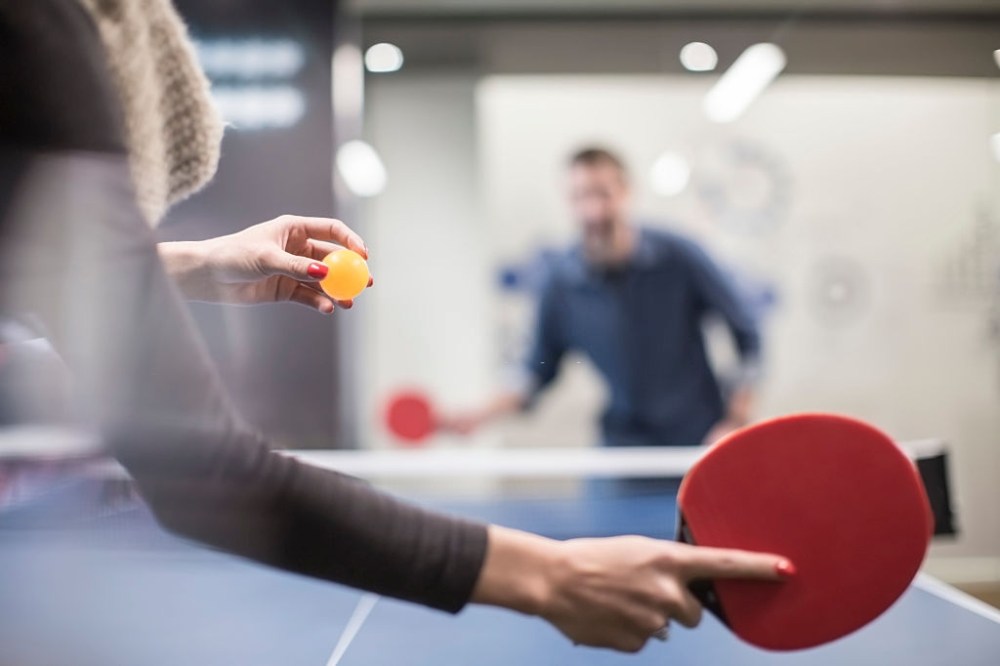Do you know how to serve in table tennis properly?
If you are struggling in this particular area, then there’s a need for you to focus on honing it. After all, some games are won by serves.
Furthermore, there are some rules in serving that you need to follow, especially during official matches. Otherwise, you will be called out.
For starters, here are some of the fundamentals when it comes to serving a ball in table tennis. For other pregame drills for table tennis, you should check this guide out!
How To Serve In Table Tennis
Step 1: Holding The Ball Flatly
The first thing that you have to learn in any legal serves is how you are going to hold the ball. Basically, you can do this by opening your hands flatly after you get the ball.
After that, let the ball stay there for around two seconds. Your hand has to be still or stationary before you throw the ball upwards.
Not following this can result in the intervention of the match official. Inevitably, the official will call your serve “incorrect”, and that will cause your opponents to garner some points.
Step 2: Positioning Your Hands In The Table
The hand that is holding the ball (or the “freehand”) should always be on the top of the table every time you are preparing to serve. Meanwhile, the ball should be at the back of the end of the ping pong table (or the serving line).
The hands should not cross or step on the serving line. Otherwise, your service will be called illegal.
Your thumb can actually cross the line. However, the ball should remain behind.
The best ping pong tables can give you a good idea on your hand placement whenever you are serving. All of their service lines are printed clearly.
Step 3: Preparing To Serve
One of the most important things that you need to do while serving is hiding the racket or paddle. Specifically, you can hide the paddle under the table, since it is not an illegal move.
In doing this, you can prevent your opponent from reading what kind of serve you are going to do. You can observe this technique in various official matches and competitions.
Of course, your hand has to be quick in bringing up the paddle once you have thrown the ball in the air.
However, keep in mind that this skill requires a lot of hand coordination and manual dexterity. Therefore, until such time you can’t do it naturally, you have to resort in placing your serving hand above the table.
Step 4: Throwing The Ball Up In The Air
Even in the process of tossing the ball in the air, you need to follow the official table tennis regulations. You guessed it right; there’s a limit as to how low you can throw the ball.
The rules of table tennis require that the ball has to be thrown at least 16 cm (6.3 inches) up in the air. Any lower than this and your serve won’t be validated as legal.
Furthermore, keep in mind that you show it as straight as possible. The ball should float vertically and not diagonally.
When it comes to official matches, a throw can’t be considered as a vertical toss if it drops right after it reached the minimum height of 16 centimeters. The ball should go higher than this.
Step 5: Striking The Ball
It is a common mistake for some players to strike the ball while it is still ascending on the air. That’s an illegal serve.
You can only hit the ball once it is falling already. Moreover, you need to be precise in your timing in doing this so that you can get a clean hit.
Make sure that you make the ball bounce on your side before it hovers above the net. If the ball goes to the other side without bouncing in your side, it is an illegal serve.
Don’t worry if you can’t get it right at first. After all, it requires practice before you can get the right force to hit the ball in the right trajectory.
The ideal serve should be fast enough to catch your opponent off guard. But at the same time, it should not be too forceful since there’s a good chance that it will bounce out of trajectory.
Conclusion
The said procedures are the very steps that you need to follow if you want to learn how to serve in table tennis correctly. Follow them, and you can serve like a pro in no time.
Of course, it is quite understandable if some of you find doing legal serve too challenging to perform. However, it can always be remedied by constant practice and patience.
That’s it for now. If you have questions or suggestions, feel free to drop them in the comment section below.
Add The Sports Daily to your Google News Feed!












